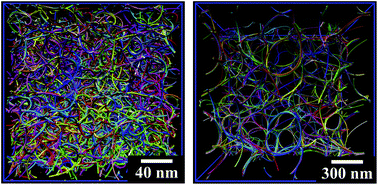Viscoelasticity of carbon nanotube buckypaper: zipping–unzipping mechanism and entanglement effects†
Abstract
It has been reported that

* Corresponding authors
a
Department of Mechanical Engineering, Northwestern University, 2145 Sheridan Road, Evanston, IL 60208-0311, USA
E-mail:
yingli@u.northwestern.edu
Fax: +1 847 4913915
Tel: +1 847 4672401
b Department of Materials, Polymer Physics, ETH Zurich, CH-8093 Zurich, Switzerland
It has been reported that

 Please wait while we load your content...
Something went wrong. Try again?
Please wait while we load your content...
Something went wrong. Try again?
Y. Li and M. Kröger, Soft Matter, 2012, 8, 7822 DOI: 10.1039/C2SM25561H
To request permission to reproduce material from this article, please go to the Copyright Clearance Center request page.
If you are an author contributing to an RSC publication, you do not need to request permission provided correct acknowledgement is given.
If you are the author of this article, you do not need to request permission to reproduce figures and diagrams provided correct acknowledgement is given. If you want to reproduce the whole article in a third-party publication (excluding your thesis/dissertation for which permission is not required) please go to the Copyright Clearance Center request page.
Read more about how to correctly acknowledge RSC content.
 Fetching data from CrossRef.
Fetching data from CrossRef.
This may take some time to load.
Loading related content
